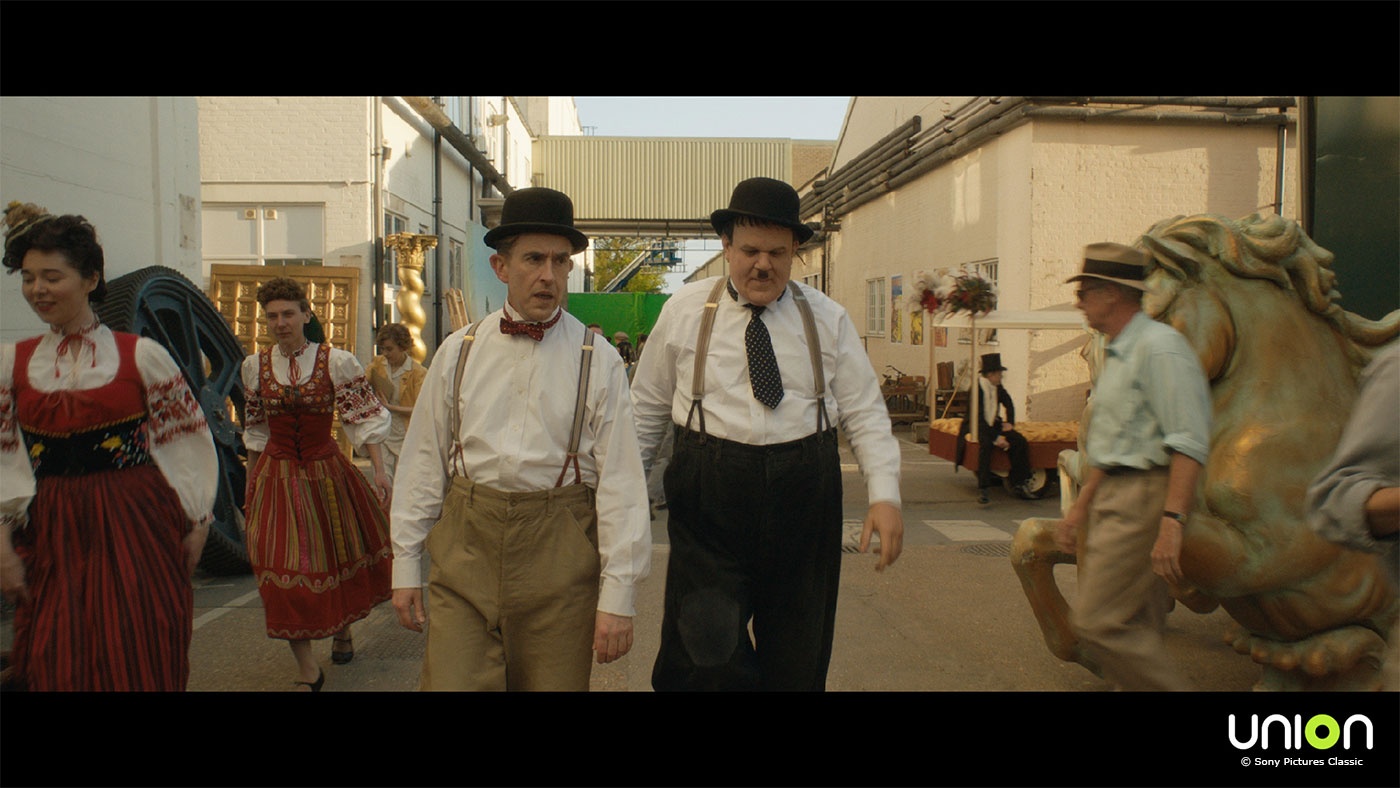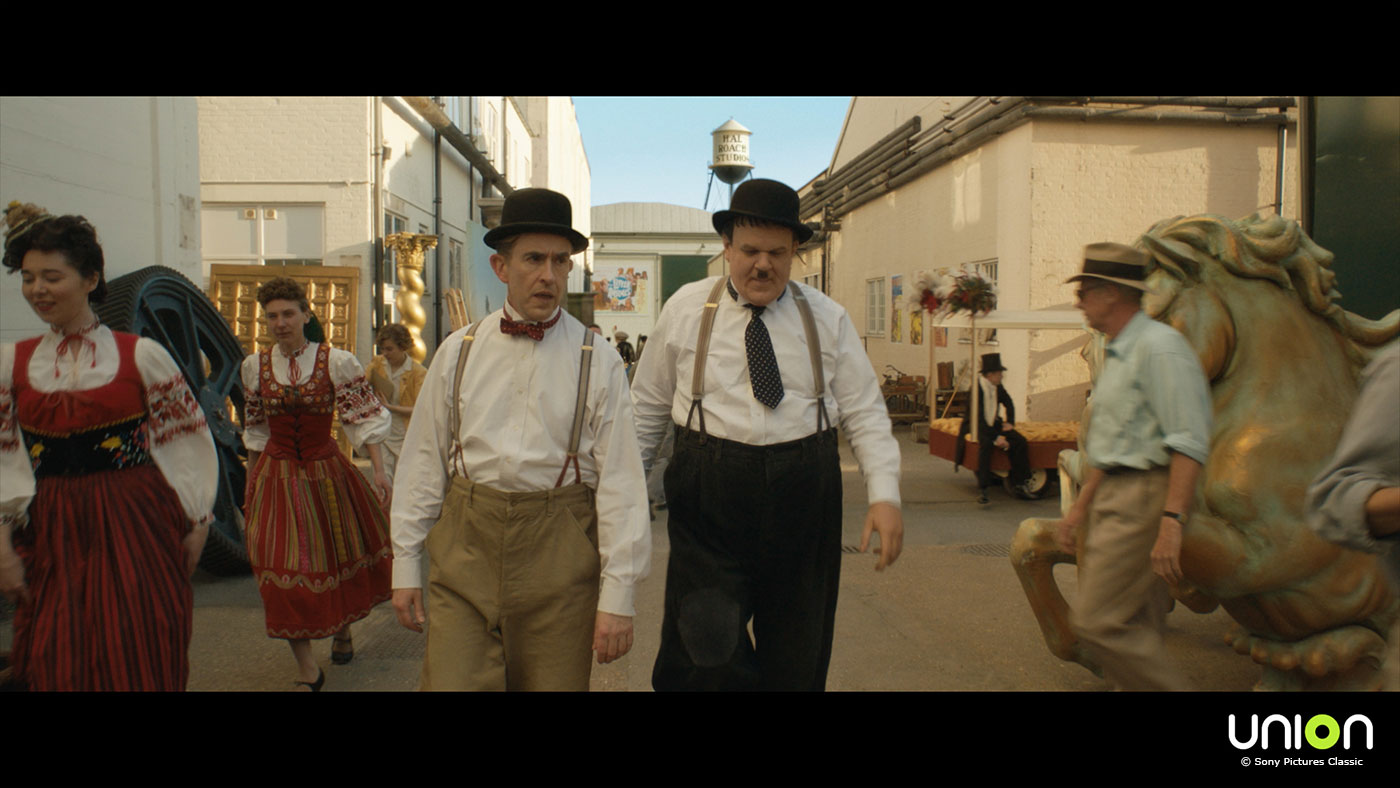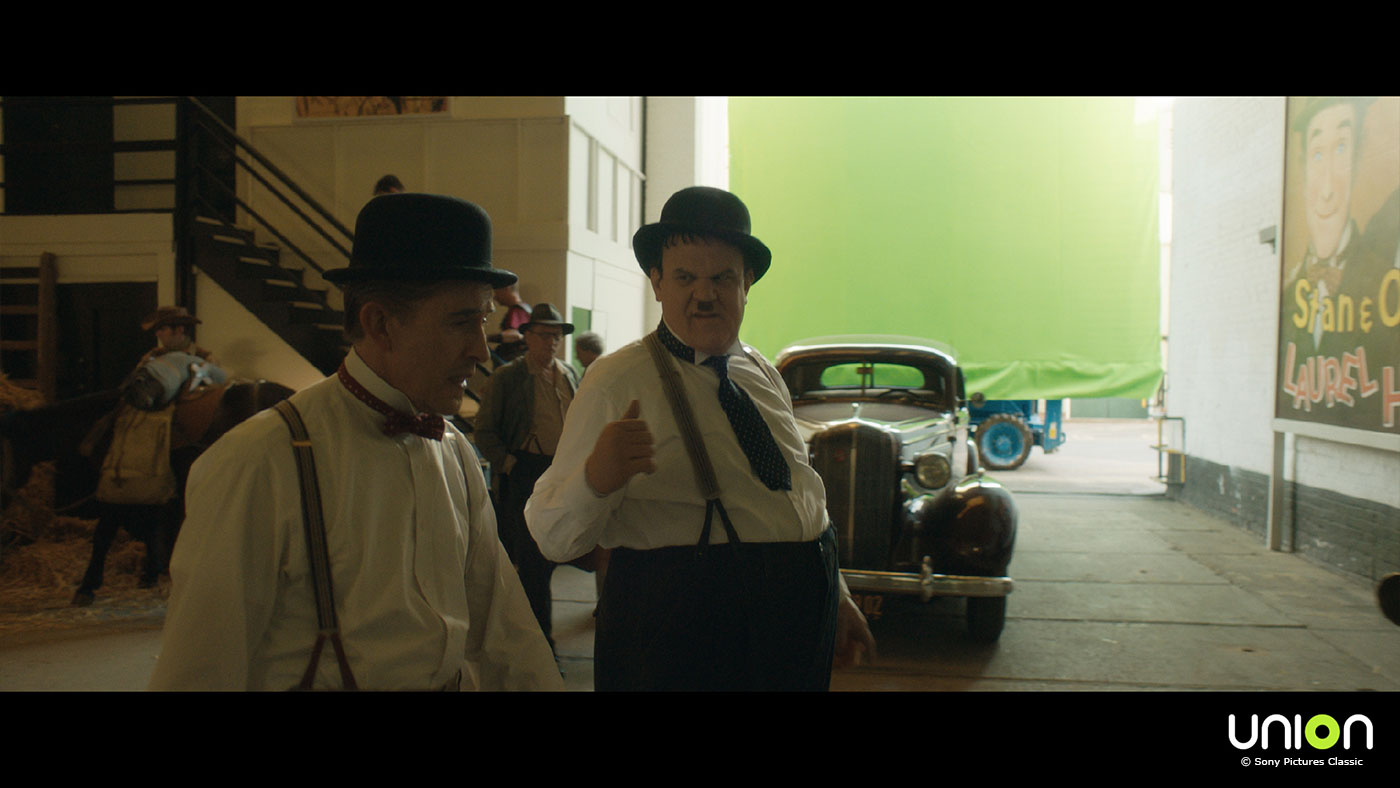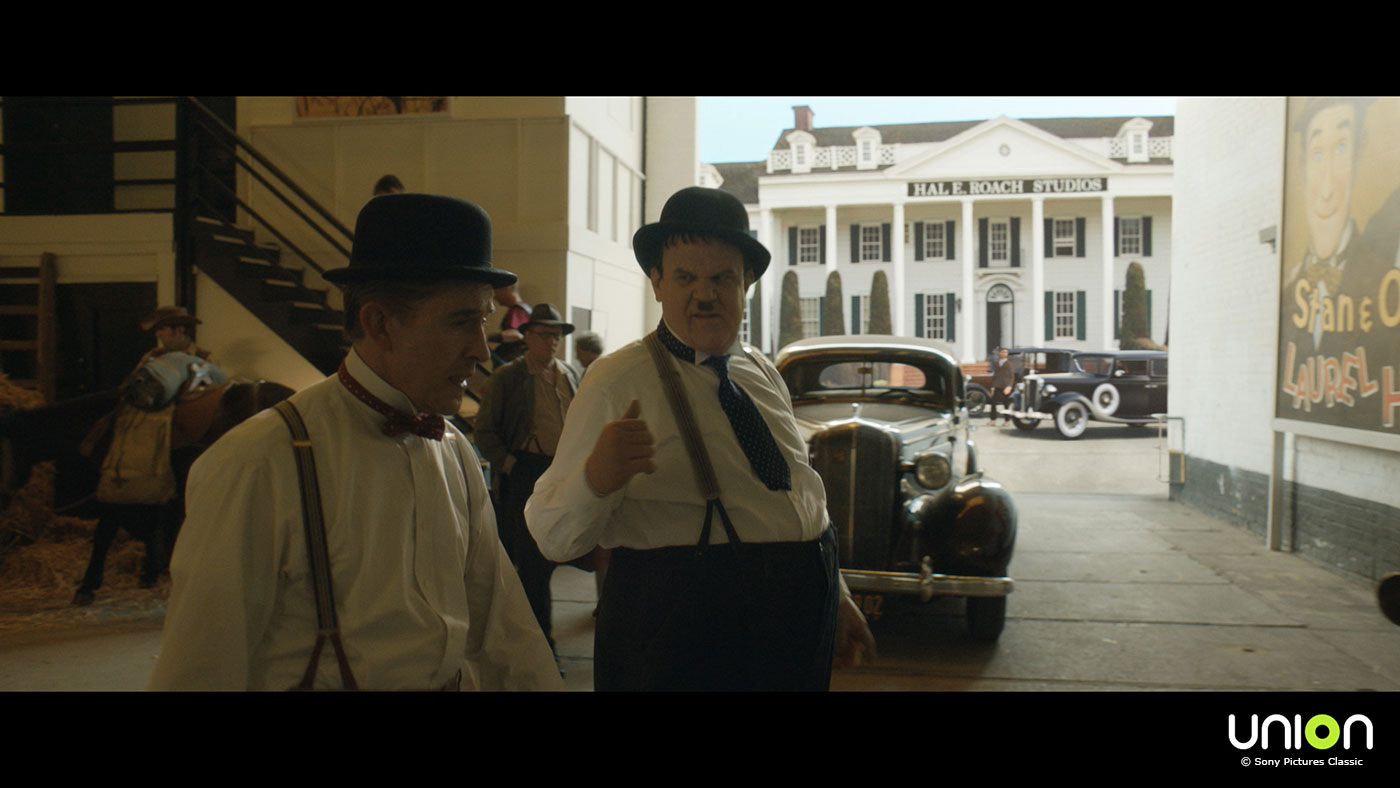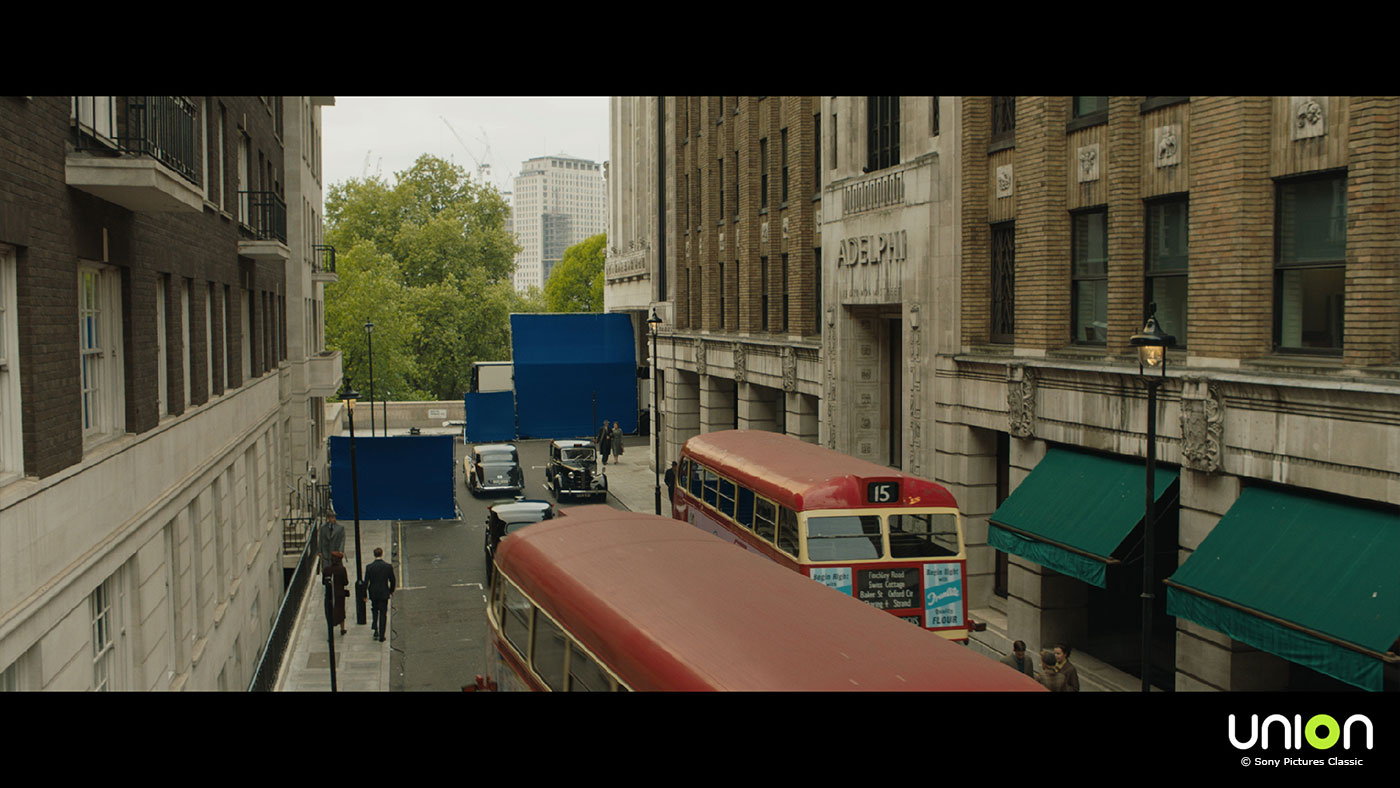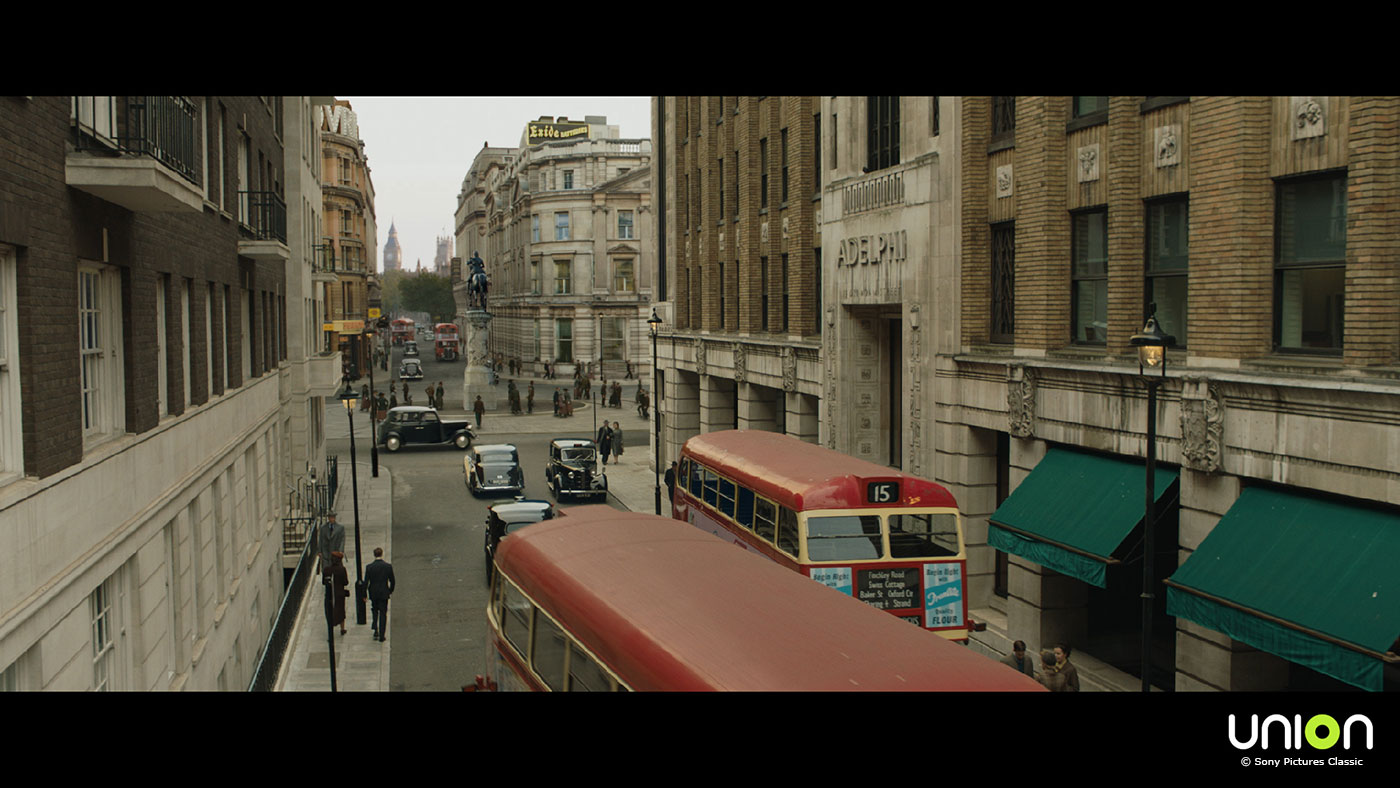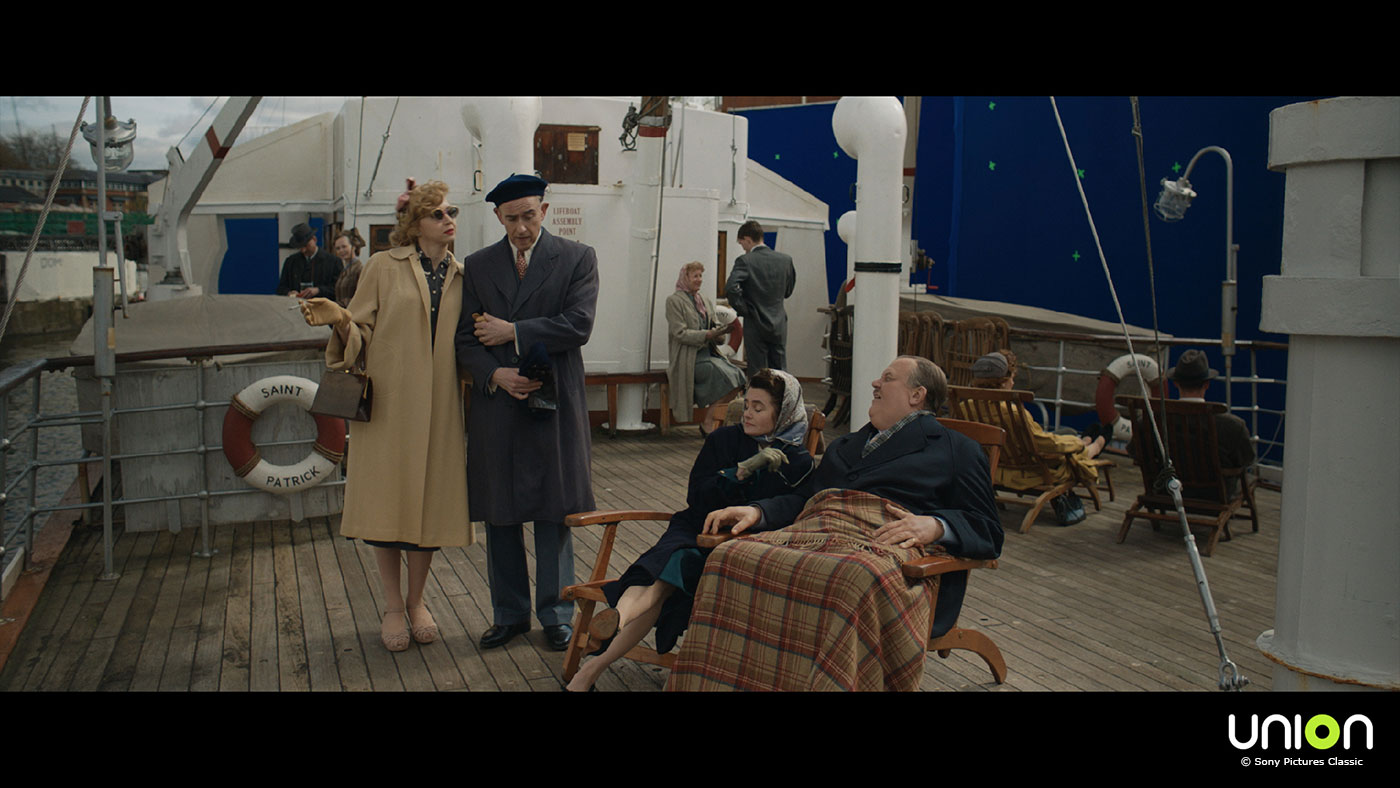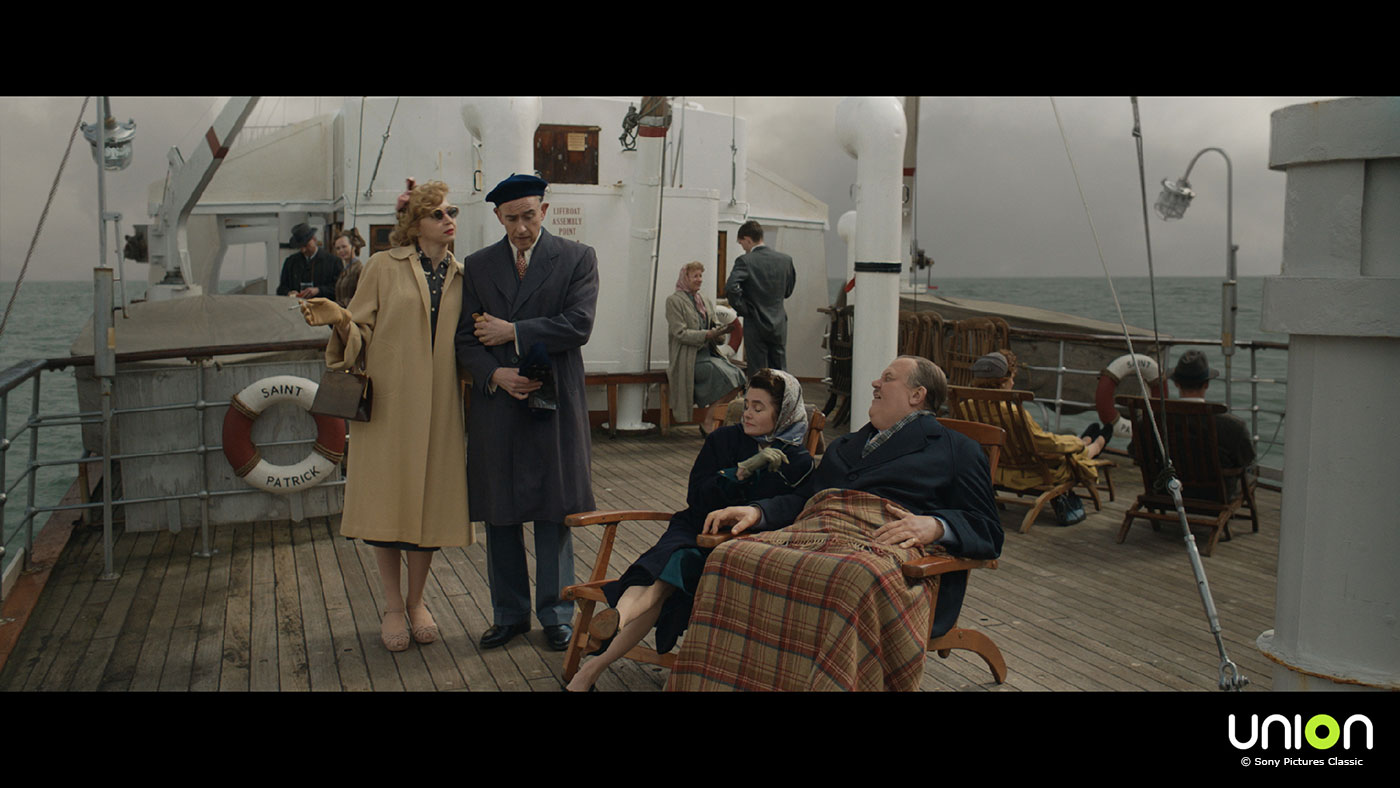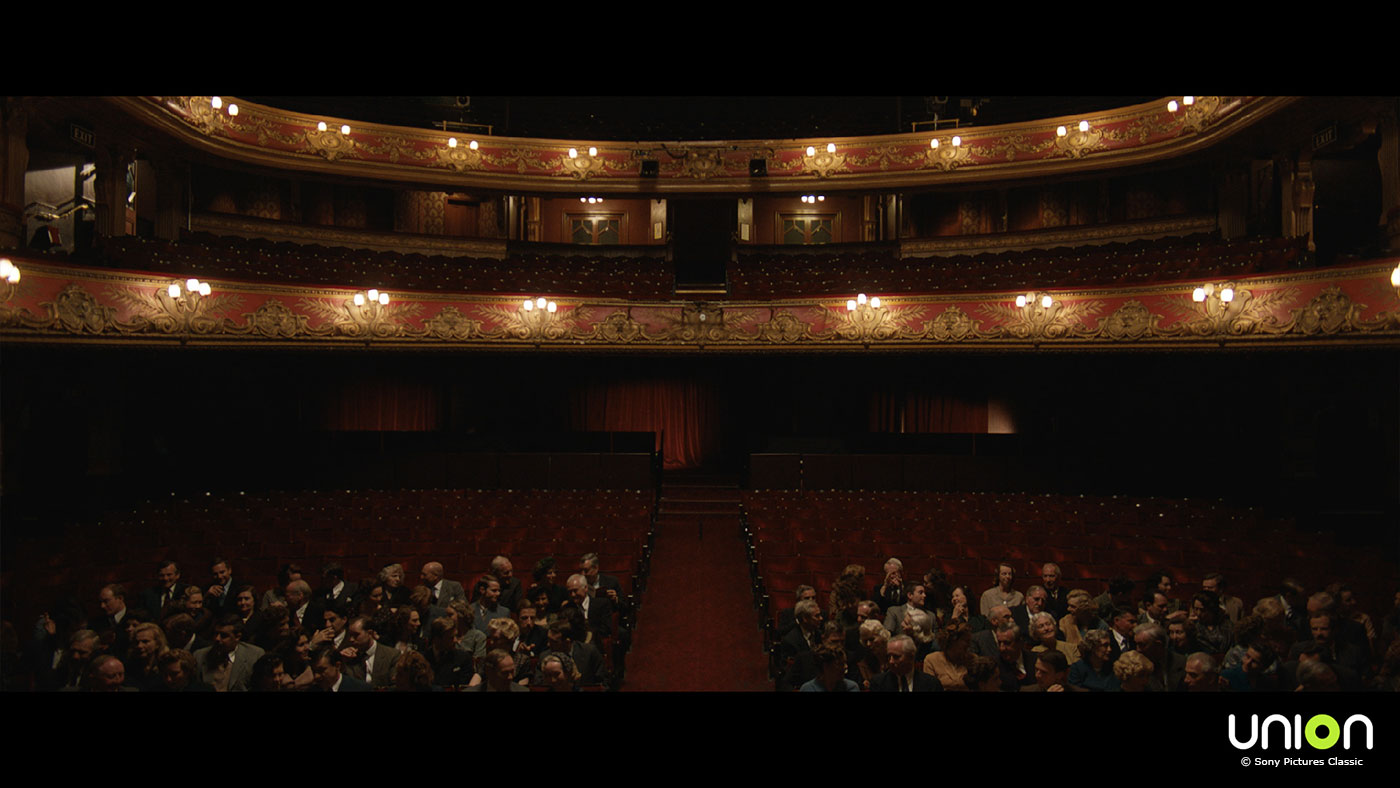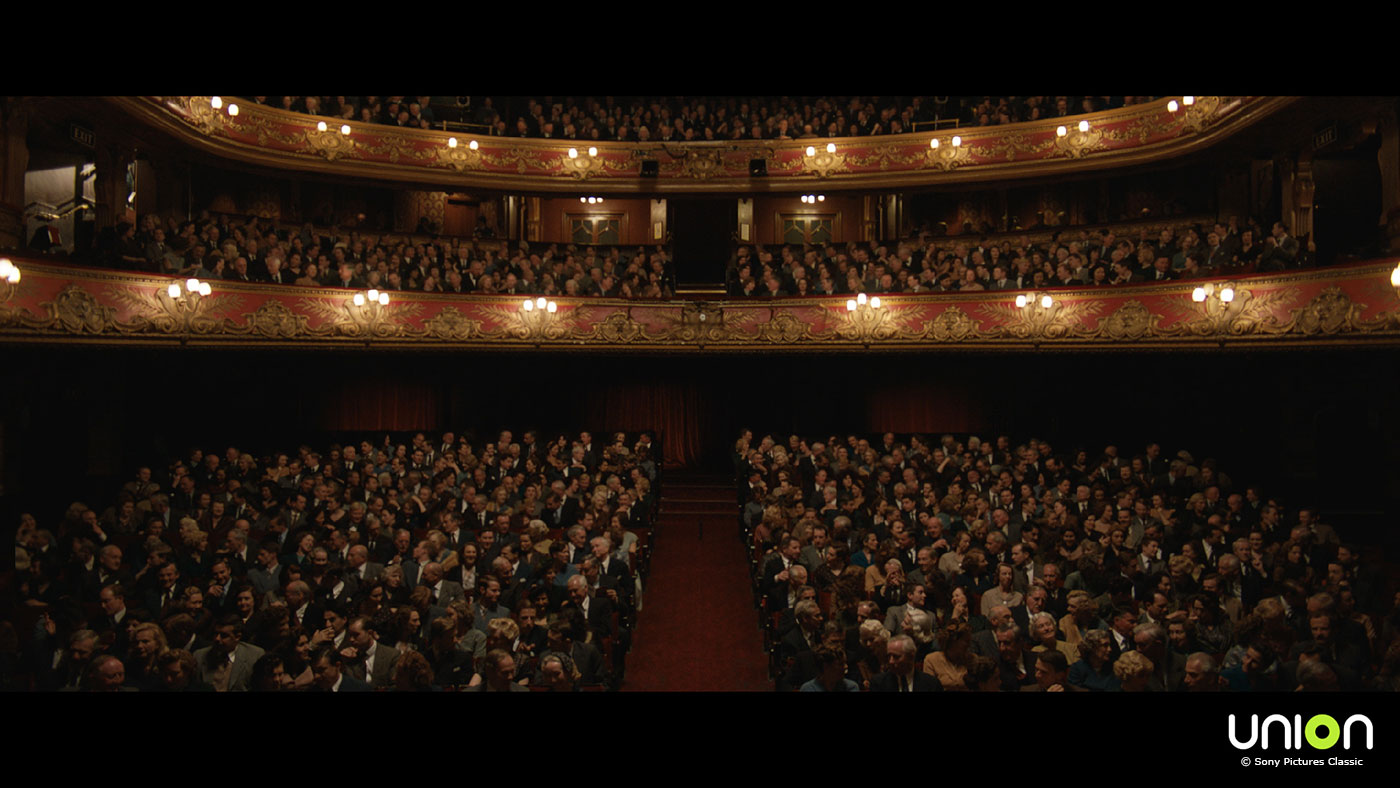In 2017, Adam Gascoyne explained the work of Union VFX on T2 – TRAINSPOTTING. He then took care of the effects of films like MY COUSIN RACHEL, VICTORIA & ABDUL, GHOST STORIES, THE MERCY and the TV series TRUST.
How did you and Union VFX get involved on this show?
We were contacted by Producer Faye Ward who we’ve worked with before on DANCING ON THE EDGE and SUFFRAGETTE.
How was the collaboration with director Jon S. Baird?
He was lovely. He was very cooperative, respectful and clear on the ambition.
What was his expectations and approach with the visual effects?
Everyone wanted it to be seamless. It’s not a VFX film so aim was just to build the characters’ world for them to naturally inhabit.
The opening shot in Hal Roach’s Hollywood Studio in the 1930s was a prime example – one long continuous shot of them walking through the lot with the studio seamlessly going about its business around them.
We approached most of the iconic London views by seeing them from different angles which allowed them to sit “quietly” in the background while making it obvious we were in London.
How did you approach the challenges of a period movie?
We’ve done a lot of period movies now, so have a good methodology – SUFFRAGETTE, THE GUERNSEY LITERARY AND POTATO PEEL PIE SOCIETY both contained 1940s and 50s London shots.
We build a set of assets from props used on set which we can then use to dress all exteriors. We make sure we have lots of research and period photographic reference of signs etc.
How did you work with the art department?
We worked closely with Production Designer, John Paul Kelly, who provided us with great references and concept work. We also worked together on location feasibility tests.
We discover many locations and environments. Can you explain in detail about their creation?
We had a really clear outline from the art department in the form of great and well considered concept artwork that removed a lot of guesswork and made for a smooth pipeline. We worked methodically on a shot by shot basis deciding what needed to be 3D and what could be 2.5D.
How did you create the shaders and textures?
We made use of Union’s central London location, nipping out to Trafalgar Square to take photos that we used to build assets and place in the scene. We also had a significant amount of in house reference from past projects and the art department. We used Maya to model, photoshop for matte painting and projected everything in Nuke.
What was the real size of the exterior sets?
They were life size London streets.
Can you tell us more about the shot with the Tower Bridge seen from the train?
This was created from a locked off camera plate shot of modern day tower bridge. It’s actually a 2.5D shot – not 3D. We modelled Tower Bridge using high res photos prepared by one of our matte painters to take away modern elements and projected on cards in Nuke We had to be careful with parallax; modelling geometry and texturing in Mari in order to avoid any issues with edges and doubling. It was a pretty complex Nuke script.
Which location was the most complicated to create and why?
The film features Piccadilly Circus from an obscure angle though – one you couldn’t see in real life. This necessitated a big 2.5D matte painting to recreate the spirit of the square today, but with very different dimensions. All the buildings were modelled in quite a lot of detail. It was a fully 3D shot complete with CG people, cars, props etc. built from reference photos.
How did you populate the theater shots?
We had 100 extras that we filmed plates of in different parts of the The Hackney Empire, which doubled for The Lyceum, and then tiled them in Nuke. There were also a few sprites.
How did you handle the crowd animations?
We used Golaem to animate the crowd.
At the end of the movie we see the ocean. Can you explain its creation?
The scenes on the boat were shot in Bristol Harbour. The sea was predominantly CG water created in Houdini to provide wake, spray and interaction with the boat combined with some drone plates.
Which sequence or shot was the most challenging to create?
The beginning sequence was quite complicated as it was 6800 frames, featured so many people moving around and crossing the camera and involved stitching together three very different locations to make one seamless journey from their dressing room, across the lot to the sound stage at Hal Roach’s Studio.
The dressing room was shot on location at Eltham Palace in Greenwich, the Roach Studio lot was filmed at Pinewood, after a lot of wrangling by the locations department asking very kindly to remove Stormtroopers and Raptor cages from shot, and the sound stage at Twickenham Studios.
We added exterior buildings and background elements such as the water tower along with CG cars and Iconic buildings modelled from photo references and then placed into the 3D scene
There were lots of moving objects ia confined space.
We had to do lots of prep work and tracking to remove road markings etc. that were not period appropriate and then repaint shadows. We also had to accommodate changing light and a 360 camera move.
How long have you worked on this show?
We were on the film from pre-production to delivery which entailed 1-2 months of onset and prep where we were also building assets and a further two months once the project moved into post production.
What’s the VFX shots count?
50.
What was the size of your set team?
15.
What is your next project?
We have a few projects out or coming out soon. FIGHTING WITH MY FAMILY and THE WHITE CROW are still in cinemas and THE HUSTLE is out next month, closely followed by YESTERDAY.
A big thanks for your time.
STAN & OLLIE – VFX BREAKDOWN – UNION VFX
WANT TO KNOW MORE?
Union VFX: Dedicated page about STAN & OLLIE on Union VFX website.
© Vincent Frei – The Art of VFX – 2019


